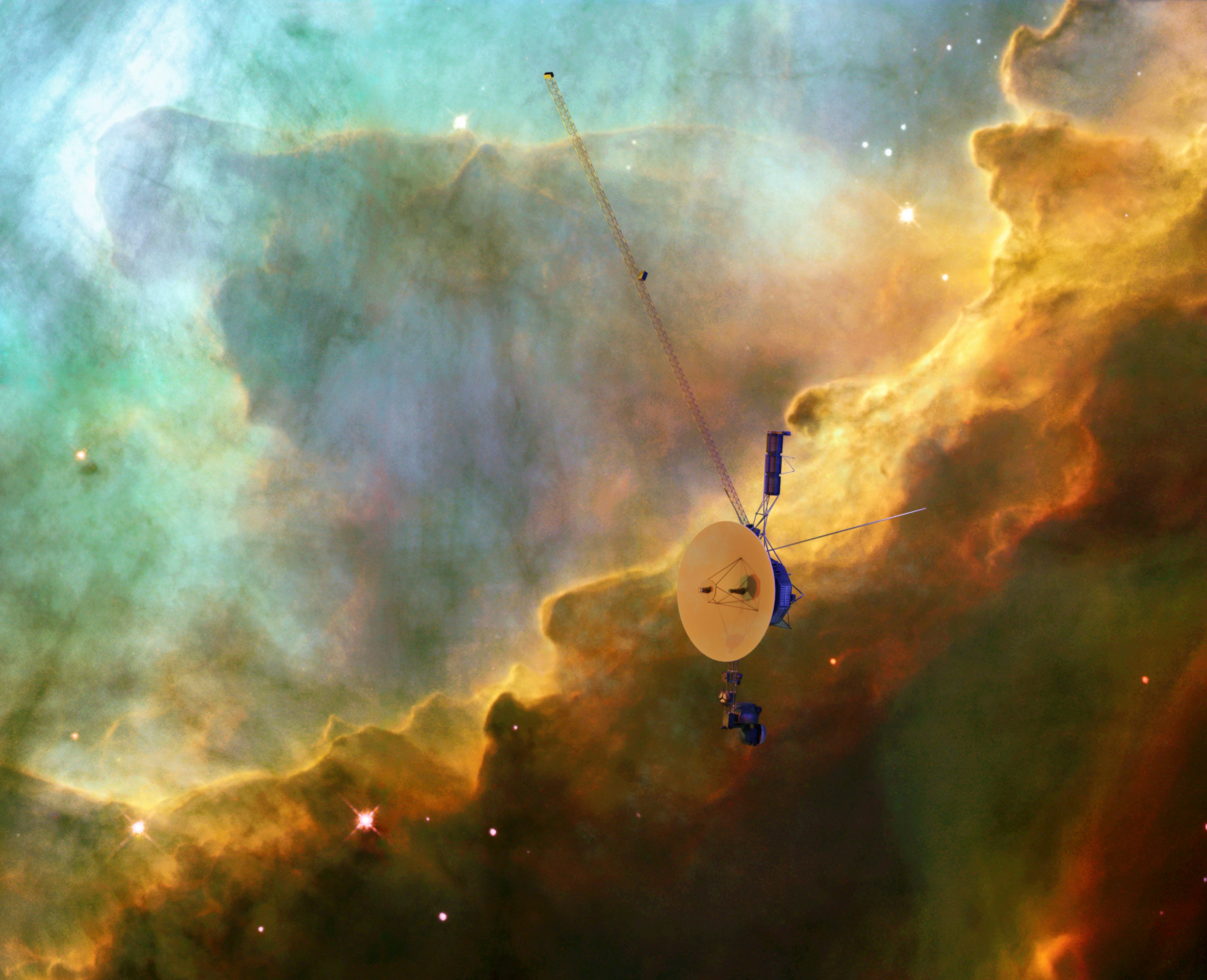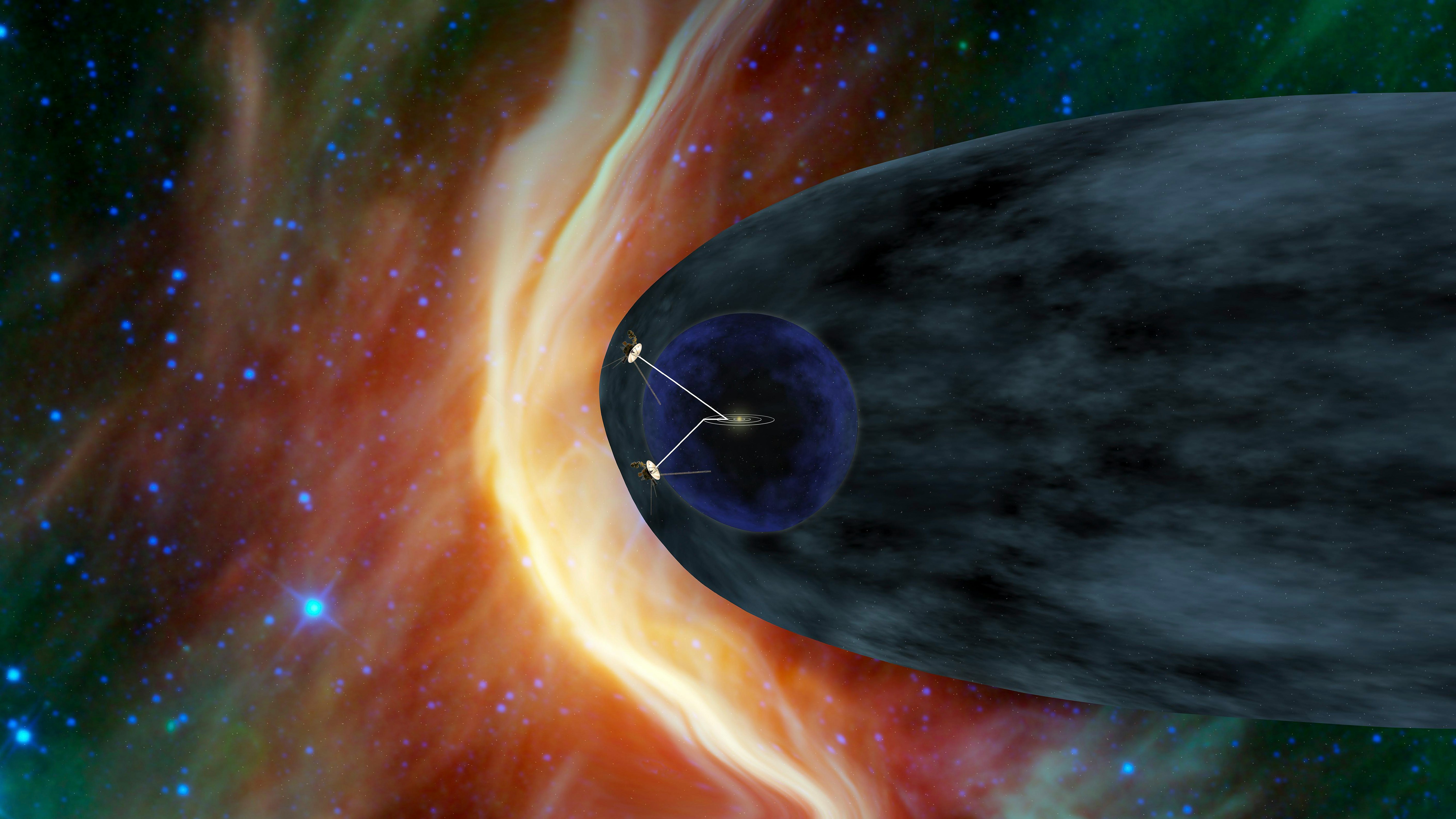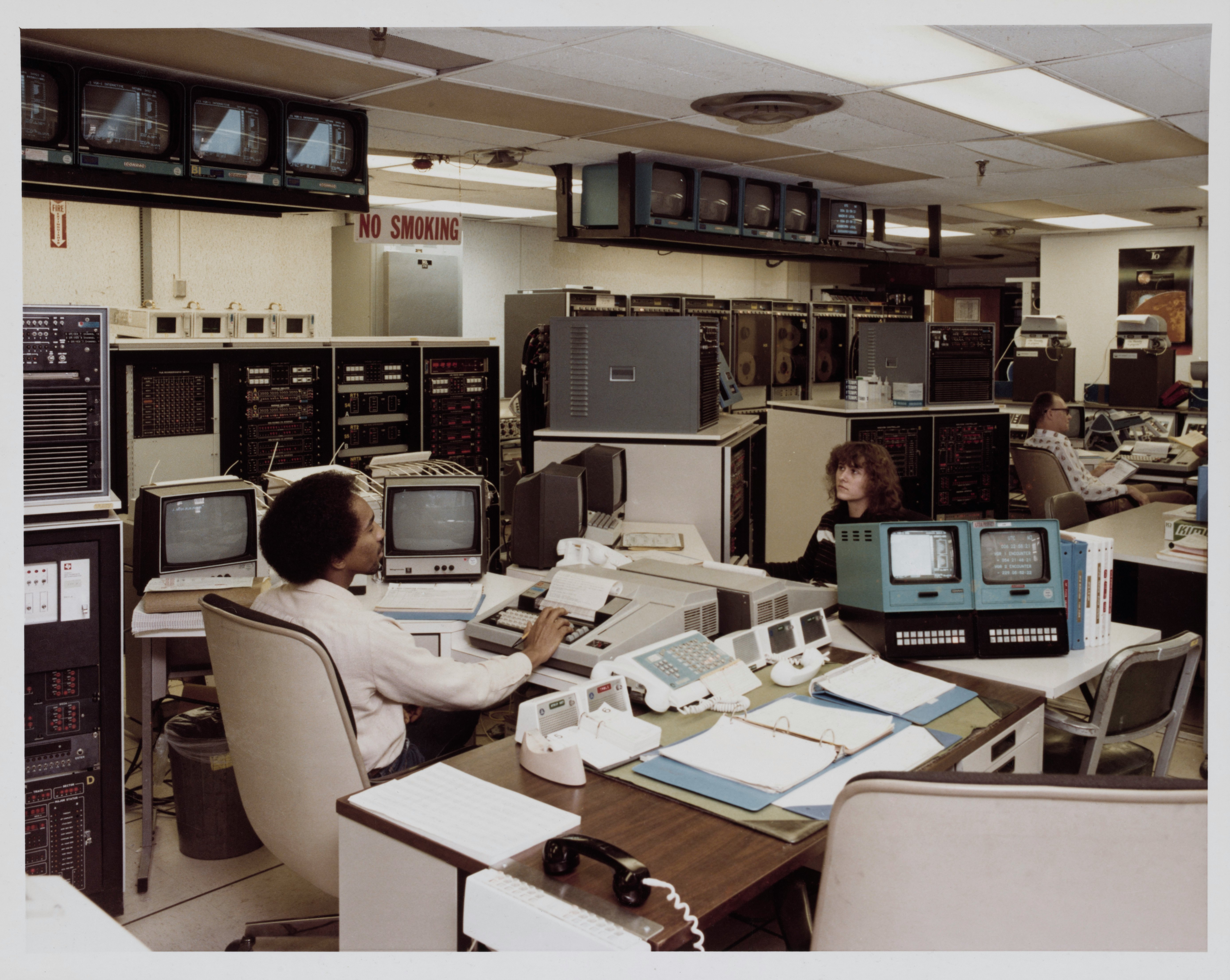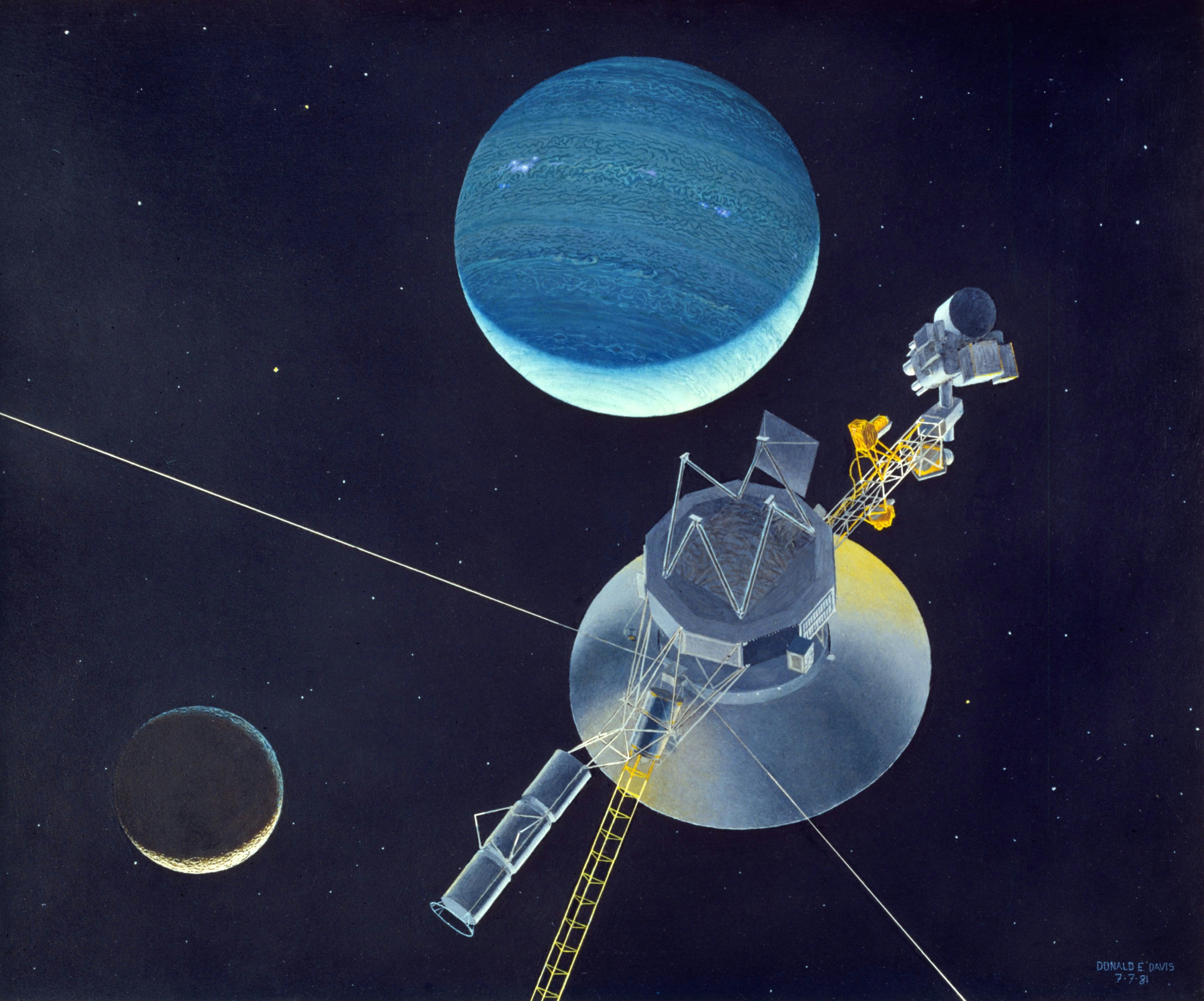
The team running NASA’s nearly 46-year-old Voyager missions hope to get the pair of aging spacecraft to 19 billion miles from the Sun (about 208 AU, or 208 times the distance of Earth’s orbit) with at least one instrument on each spacecraft still sending home information about interstellar space.
To pull it off, they’re racing against nuclear physics, constantly searching for ways to keep the Voyagers’ instruments and radio transmitters running as the radioactive material that powers them steadily decays. But now NASA is considering a clever new plan that may buy the Voyagers a little more time.
What’s New
Because the engineers who built Voyager 1 and 2 knew the spacecraft would venture too far from the Sun to use solar power, they opted for what’s called a radioisotope thermoelectric generator. A supply of radioactive material produces heat as it decays, and the generator converts that heat into electricity. But as the radioactive material decays, its power output also decreases, so every year, the Voyagers have four watts less power to run on.
At the moment, Voyager 1 is powering its four remaining instruments (one broke down a few years ago) with about 8.3 watts to spare; Voyager 2, with five instruments still running, has about 3.6 watts to spare. Unless the engineering team comes up with a plan, they’re going to have shut off one of Voyager 2’s instruments in less than a year in order to have enough power to keep the others — and communications with Earth — running.

One idea on the table, called voltage management, could buy Voyager 2 another year and a half before its operators have to shut down an instrument.
Watts measure how much electrical power is flowing through a circuit; think of it as the electrical version of measuring how much water flows out of a faucet every minute. (That’s not a perfect metaphor, but it’s close enough to illustrate the point.)
Voltage, on the other hand, is the difference in electrical charge between two points in a circuit. Wind or water will flow from a spot with high pressure to a spot with low pressure, and electrons will do pretty much the same thing. By regulating that difference in electrical potential, engineers can get an instrument to use less power over time. It’s a fairly common energy-saving trick here on Earth, and Suzanne Dodd, project manager for Voyager, says NASA’s Mars rovers use voltage management, too.
“We haven’t implemented it yet; we haven’t needed to implement it yet. We were trying to see if that was something we could do on the spacecraft, and it appears that it will be,” Dodd tells Inverse. “We think it will work, and it should get us another year-plus, maybe two years in lifetime before we would have to turn off an instrument.”
Here’s the Background
Keeping the two Voyagers running this long has taken constant work — and a lot of creativity. At launch, no one expected these spacecraft to still be running 45 years in the future, after most of their original designers had passed on.
“[Flying] beyond Neptune, and certainly the 30-plus years we spent getting out to interstellar space, were not thought of at the time of launch,” says Dodd. “I’m confident that if you talk to an original designer — which would be very hard to do now because most of them have passed away — they would say they never would have expected it to last as long as it has.”
The Voyagers were designed to fly by the planets of the outer Solar System, giving humanity a closer look at the strange, giant worlds beyond the asteroid belt — following up on the earlier Pioneer 10 and 11 missions. Both Voyager spacecraft sent home stunning images of Jupiter and Saturn, and Voyager 2 became the first, and so far only, spacecraft to get anywhere near Uranus and Neptune. But with that mission complete, the Voyagers kept going, sending home valuable information about how solar wind and magnetic fields changed in the outer reaches of the Solar System — and eventually giving us our first real taste of interstellar space.

Keeping the spacecraft going has kept engineers on their toes.
“I would say that 100 percent of it has been figured out along the way,” says Dodd. “Absolutely nothing was known about flying for 45 years at 175 AU from us here on Earth, and we're into our 46th year now.”
In some ways, Dodd and her colleagues have found it easier to improvise with the decades-old Voyagers — and their relatively simple parts and systems — than they might have with more recent spacecraft.
“The simplicity of Voyager helps if you want to change things over time as the spacecraft gets older and the mission lasts longer,” says Dodd. “It's kind of like having an old car, and you can look under the hood and know what the key pieces are. When you have a new car, it's all driven by software and it's really hard to just go in there and tweak the carburetor and have it still run.”
But also like an old car, the venerable Voyagers have developed their own quirks over time. Voyager 1’s plasma science instrument broke down during the 2000s, and Voyager 2’s radio receiver has trouble picking up certain frequencies.
“I often describe it like you have two twin sisters that are identical at launch, but different pieces of them have failed over time,” says Dodd. “You can think of plasma as sort of a sense of touch, because it immediately can sense the density of the plasma that you're traveling through. So you've got one twin sister with no hearing and one twin sister with no sense of touch or feel.”
Why It Matters
At this point, the sheer length of the Voyager missions is scientifically useful in itself, especially to physicists who study the Sun, its magnetic field, and the wind of charged particles it blows out into space.
“You have this time record for 46 years of how the effects of the Sun change as you go further and further away from it,” says Dodd.

The Voyagers are the first working spacecraft to travel to interstellar space — a vastness into which we’ve looked with telescopes but never before actually sent a probe.
Along the way, they’re sending home the first real data about how the Sun’s magnetic field and the edges of its solar wind interact with the magnetic fields and charged particles of interstellar space. That data helps physicists build better models to explore how our Sun works and what interstellar space is like. And it will be decades, at least, before we get another chance at that.
What’s Next
Even with voltage management — and every other trick NASA engineers can pull out of their hats — the Voyagers’ team will eventually have to start shutting down instruments, one by one.
When the time comes, they’ll choose which instruments to shut down based partly on power consumption and partly on scientific usefulness. Dodd says the team will try to avoid shutting down the same instrument on both spacecraft, at least for as long as that’s an option. The last instruments standing will probably be the magnetometer and an instrument for measuring charged particles called the Plasma Wave Subsystem — two of the Voyagers’ least power-hungry instruments and also two that can reveal the most about what interstellar space is like.
“I would say our stretch goal is to get out to 208 AU, which would take us to about 2035 or in that ballpark, so another 10 to 12 years,” says Dodd. “The goal would be to get there with one instrument still operating.”
At that point, the last thing to go will be the Voyagers’ radio transmitters. When the spacecraft run out of power to keep those running, the mission here on Earth will be over, and the Voyagers will fly on in silence.







